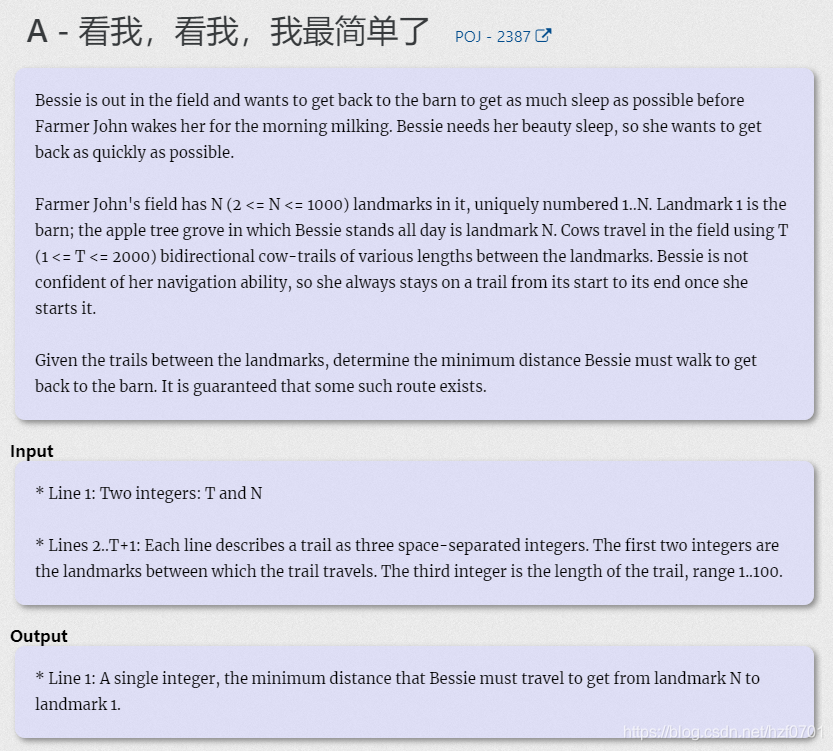原题链接: http://poj.org/problem?id=2387

测试样例
Sample Input
5 5
1 2 20
2 3 30
3 4 20
4 5 20
1 5 100
Sample Output
90
Hint
INPUT DETAILS:
There are five landmarks.
OUTPUT DETAILS:
Bessie can get home by following trails 4, 3, 2, and 1.
题意: 求1到n的最短路径。
解题思路: 单源点最短路径问题,所以我们使用Floyd算法肯定会超时(但我比赛的时候还是信仰的交了一发哈哈),在此题中我们需要使用Dijkstra算法解决,相当于一道模板题,值得注意的是这题有重边,我们需要取最优边。如果你对Dijkstra算法还不太熟悉,这里指路一篇blog:Dijstra算法详解
AC代码
/*
*
*/
//POJ不支持
using namespace std;
const int inf=0x3f3f3f3f;//无穷大。
const int maxn=1010;//限定值。
typedef long long ll;
int t,n;
int graph[maxn][maxn];
int dis[maxn];
bool vis[maxn];
void dijstra(){
memset(vis,false,sizeof(vis));
vis[1]=true;
rep(i,1,n){
dis[i]=graph[1][i];
}
int pos,minn;
pos=1;
rep(i,1,n-1){
minn=inf;
rep(j,1,n){
if(dis[j]<minn&&!vis[j]){
minn=dis[j];
pos=j;
}
}
vis[pos]=true;
rep(j,1,n){
if(!vis[j]&&dis[j]>dis[pos]+graph[pos][j]){
dis[j]=dis[pos]+graph[pos][j];
}
}
}
cout<<dis[n]<<endl;
}
int main(){
while(cin>>t>>n){
memset(graph,inf,sizeof(graph));
int u,v,w;
while(t--){
cin>>u>>v>>w;
if(w<graph[u][v]){
graph[u][v]=graph[v][u]=w;
}
}
dijstra();
}
return 0;
}









